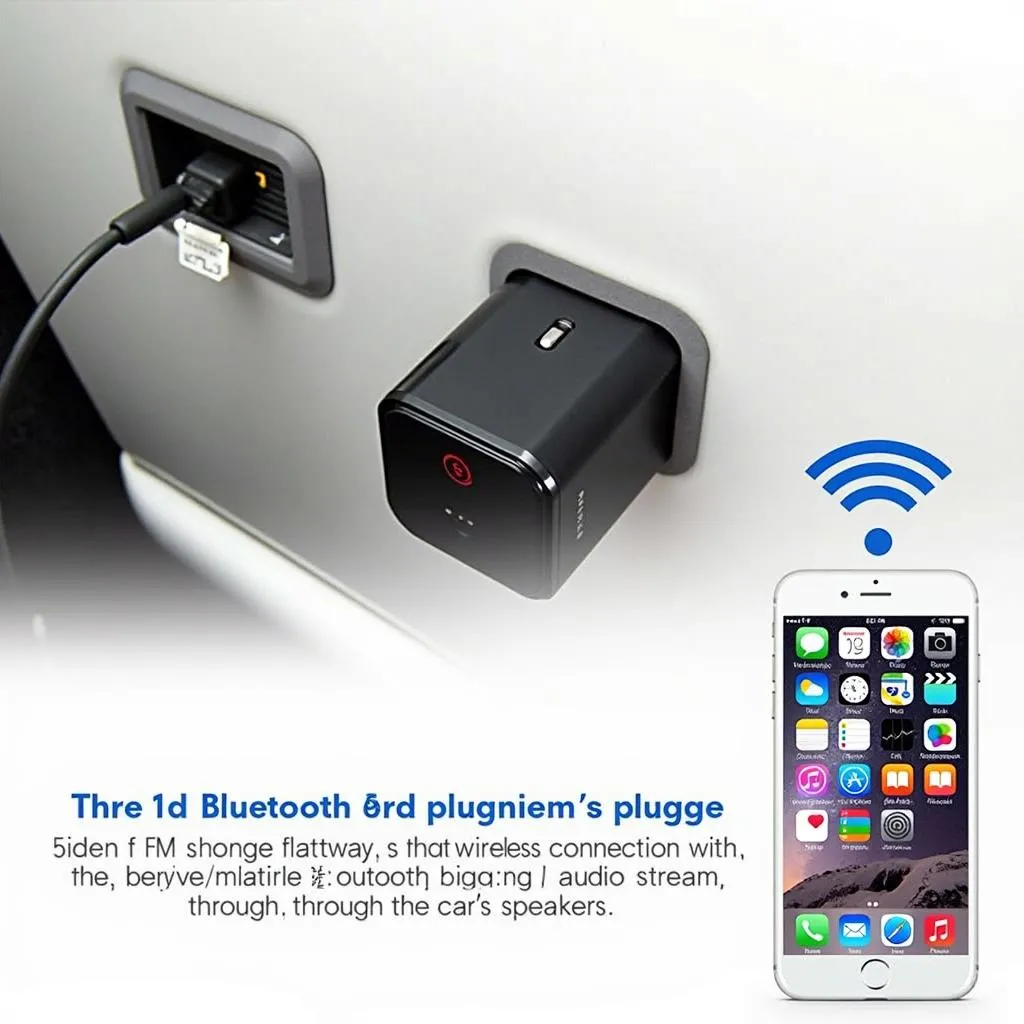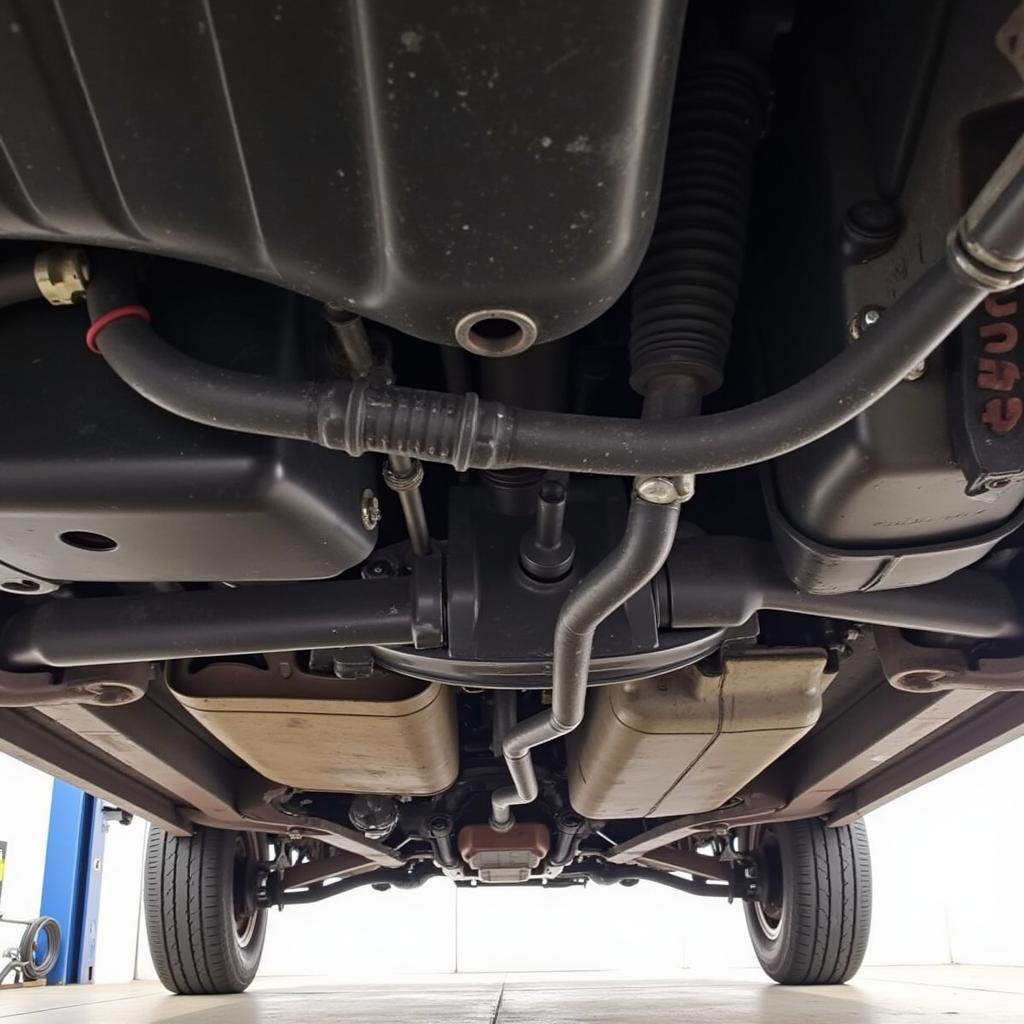If you’re reading this, you’ve likely encountered the cryptic “creek fratricide seat warning” on your dashboard, and you’re understandably perplexed. While this sounds like a scene from a dark comedy about competitive kayaking, it’s likely a simple issue with your car’s Occupant Detection System (ODS). This system is responsible for determining if someone is sitting in the passenger seat and adjusting airbag deployment accordingly.
While your car isn’t accusing anyone of “creek fratricide”, the error message itself is likely a software glitch or a miscommunication between the seat sensors and your car’s computer. Let’s delve into the possible causes and how to address them.
Common Causes of the “Creek Fratricide Seat Warning”
The most frequent culprits behind this unusual warning message are:
- Software Glitches: Just like our phones and computers, cars rely heavily on software. A temporary glitch in the ODS software can lead to this inaccurate warning.
- Faulty Seat Sensor: The sensor mat embedded in the passenger seat may be malfunctioning. This can be due to wear and tear, spilled liquids, or damage to the wiring.
- Seat Belt Buckle Issue: Sometimes, the problem isn’t the seat itself, but the buckle that the passenger seat belt latches into. A faulty buckle sensor can also trigger the warning.
Diagnosing the Root of the Problem
Before you panic, it’s crucial to determine the exact cause of the warning message. Here’s a logical approach:
- Check for Obvious Obstructions: Ensure there are no objects on the passenger seat that could be triggering the sensor. Even a seemingly light item like a handbag or a few papers can be enough to cause confusion.
- Fasten the Passenger Seat Belt: Try fastening the passenger seat belt, even if the seat is empty. This can sometimes reset the system.
- Restart Your Car: A simple restart can often resolve temporary software glitches. Turn off your car, wait a few minutes, and then restart it.
Solutions: From Simple Fixes to Expert Help
If the basic troubleshooting steps above haven’t resolved the issue, here are some further solutions:
1. Software Update
“In many cases, a simple software update is all that’s needed,” says automotive electronics expert, Sarah Jenkins, lead engineer at AutoTech Solutions. “Car manufacturers frequently release updates that address known bugs and glitches like this.” To check for updates, consult your owner’s manual or contact your car’s manufacturer.
2. DIY Sensor Inspection
If you’re comfortable with basic car maintenance, you can attempt to visually inspect the seat sensor. The sensor mat is typically located underneath the seat cushion. Look for any visible damage, loose connections, or debris that might be interfering with the sensor.
Caution: Working with electrical components can be dangerous. If you’re not confident in your abilities, it’s best to leave this to the professionals.
3. Professional Diagnosis and Repair
For a definitive diagnosis and expert repair, it’s best to consult with a qualified automotive electrician or your dealership’s service center. They have the specialized tools and knowledge to accurately diagnose and fix issues with the ODS.
“Trying to fix complex automotive electronics without the right expertise can lead to further damage and costly repairs down the road,” warns Ms. Jenkins.
Preventing Future Occurrences
While not all causes are preventable, there are steps you can take to minimize the chances of encountering this warning again:
- Keep Your Car Software Up-to-Date: Regularly check for and install software updates from your manufacturer.
- Avoid Placing Heavy Objects on the Passenger Seat: The added pressure can damage the sensor mat over time.
- Clean Spills Immediately: Liquids can seep into the sensor mat and cause malfunctions.
- Schedule Regular Car Maintenance: A professional check-up can identify potential issues early on.
Conclusion
The “creek fratricide seat warning”, though baffling at first, is usually indicative of a manageable issue with your car’s Occupant Detection System. By understanding the potential causes and solutions, you can address the problem swiftly and confidently. Remember, safety is paramount, so if you’re unsure about any aspect of diagnosing or repairing the issue, it’s always best to seek professional assistance.


